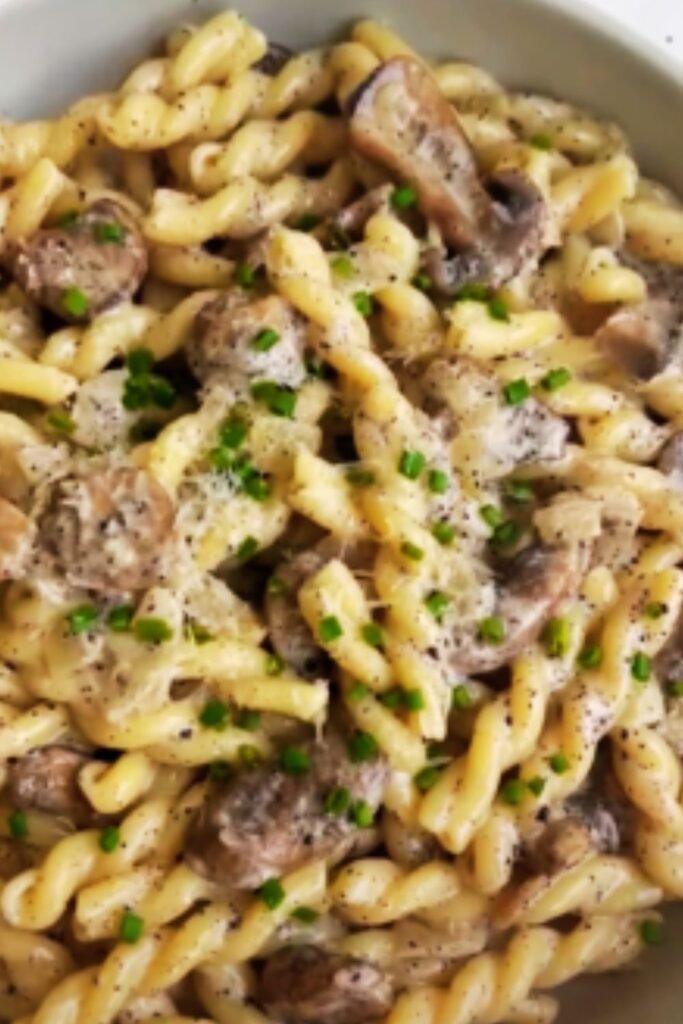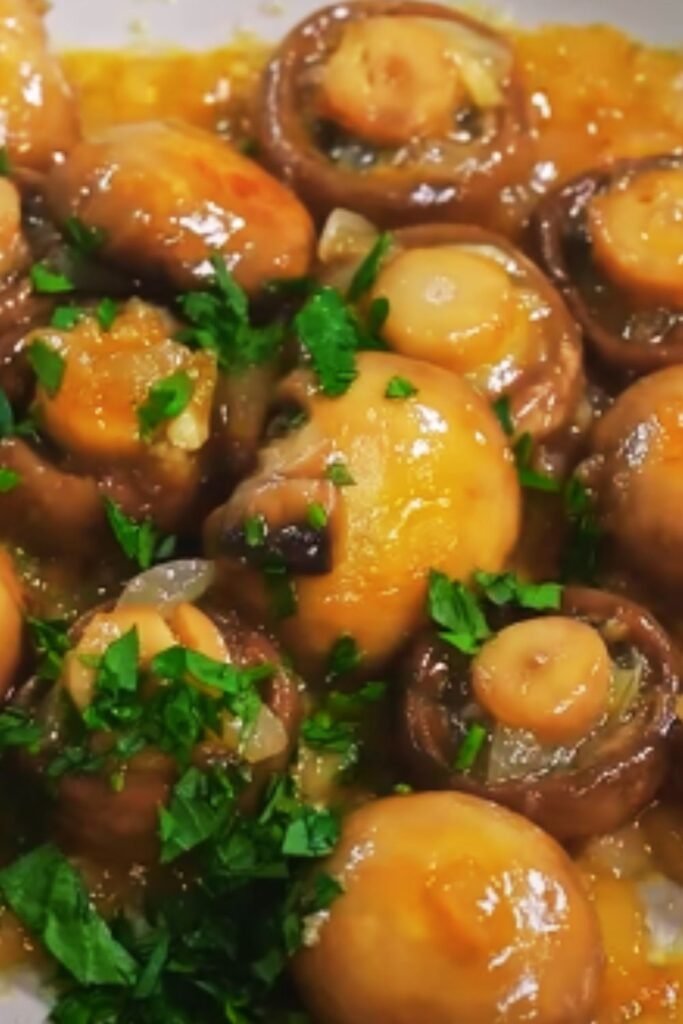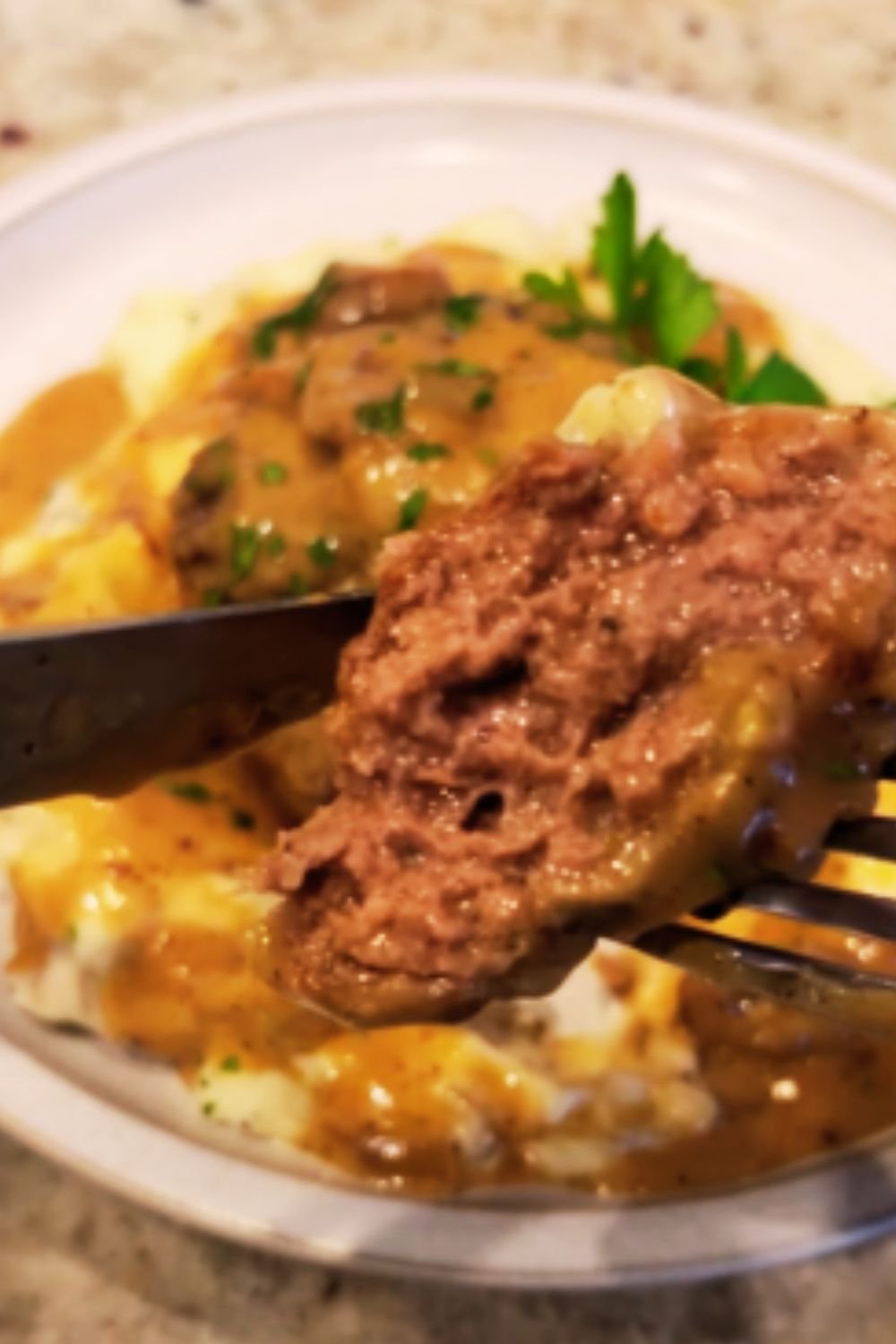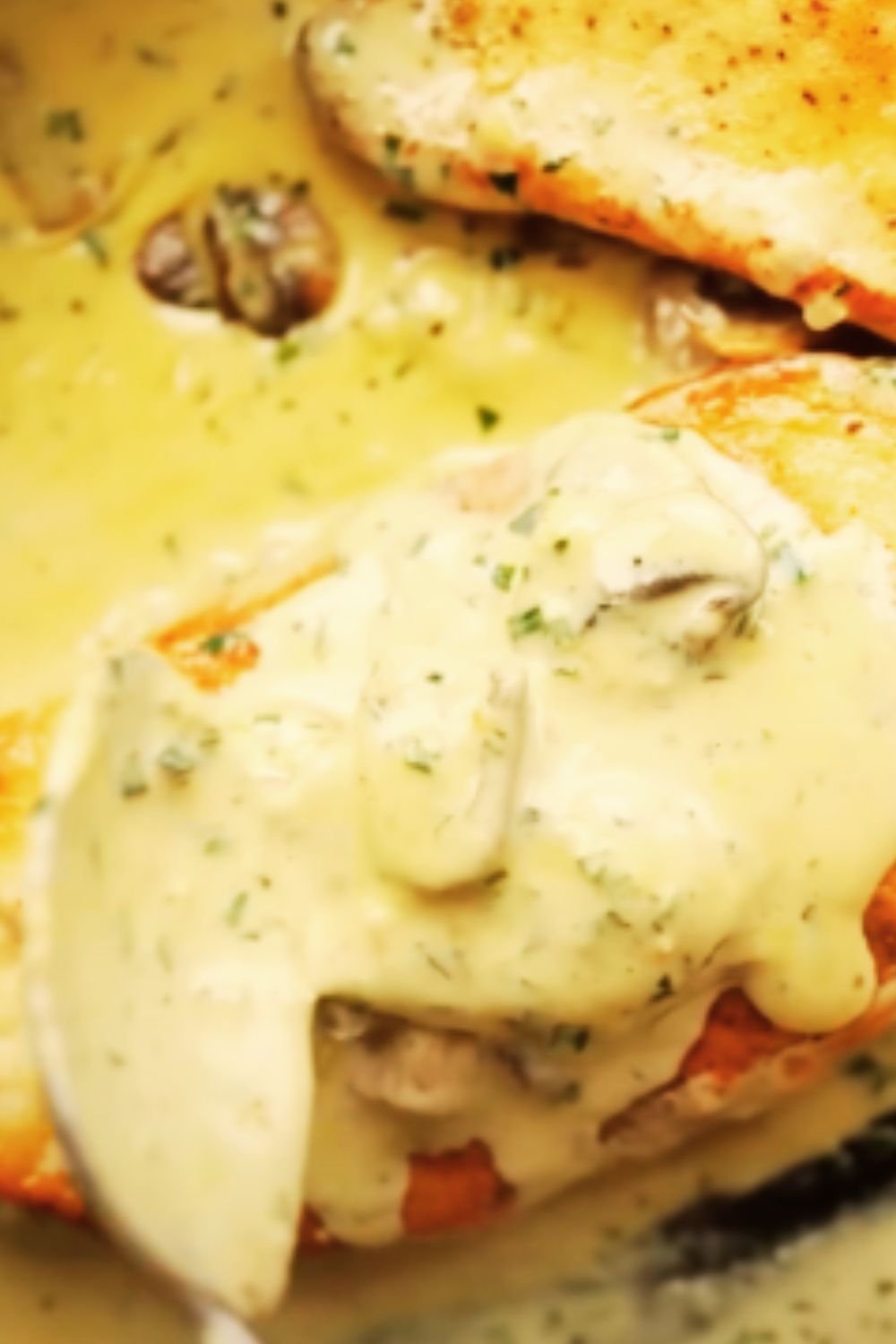There’s something almost magical about a well-made creamy mushroom sauce. The earthy depth of mushrooms combined with the silky richness of cream creates a culinary experience that’s both comforting and sophisticated. I’ve spent years perfecting my mushroom sauce recipe, and today I’m excited to share everything I’ve learned about creating this versatile kitchen essential.
Whether you’re looking to elevate a simple steak dinner, transform plain pasta into a gourmet meal, or add something special to your chicken dish, a good mushroom sauce is the answer. The best part? It’s surprisingly simple to make once you understand the foundations.
The Magic of Mushrooms
Before diving into the recipe, let’s talk about what makes mushrooms so special in cooking. Mushrooms contain glutamates, which are naturally occurring compounds that create that deeply satisfying umami flavor. When cooked properly, mushrooms release these compounds, adding incredible depth to any sauce.
I’ve found that taking the time to properly brown mushrooms is the difference between a good sauce and an exceptional one. This caramelization process concentrates their flavor and creates those beautiful brown bits on the bottom of your pan that will later be deglazed into liquid gold.
Choosing Your Mushrooms
The type of mushrooms you select will significantly impact the final flavor of your sauce. Here’s a breakdown of popular varieties and what they bring to the table:
| Mushroom Type | Flavor Profile | Texture When Cooked | Best Used For |
|---|---|---|---|
| Button/White | Mild, subtle earthy flavor | Firm, slightly spongy | Everyday sauces, good base mushroom |
| Cremini/Baby Bella | Richer, more pronounced than button | Meaty, holds shape well | All-purpose, adds more depth than button |
| Portobello | Bold, very earthy | Meaty, substantial | Rich sauces, steak accompaniments |
| Shiitake | Garlic-like, woodsy | Tender with slight chew | Asian-inspired sauces, complex flavor profiles |
| Oyster | Delicate, slightly sweet | Velvety, tender | Delicate sauces, seafood pairings |
| Porcini (dried) | Intensely earthy, almost nutty | Chewy when rehydrated | Adding concentrated flavor to any sauce |
| Chanterelle | Apricot-like, peppery | Firm yet tender | Gourmet sauces, special occasions |
| Wild Mushroom Mix | Complex, varied | Diverse | Special occasion sauces with nuanced flavor |
I personally love using a mix of cremini and shiitake mushrooms for my everyday sauce. The cremini provides a good meaty base while the shiitake adds complexity. For special occasions, I’ll include dried porcini (rehydrated) for an incredible flavor boost.
Essential Equipment
Before we start cooking, let’s make sure you have the right tools:
- A heavy-bottomed skillet or sauté pan (cast iron or stainless steel works best)
- Sharp chef’s knife for slicing mushrooms
- Wooden spoon or heat-resistant silicone spatula
- Measuring cups and spoons
- Whisk
- Small bowl for combining certain ingredients
The right pan makes all the difference when creating this sauce. I’ve found that a wide surface area helps moisture evaporate quickly, allowing mushrooms to brown rather than steam.
My Ultimate Creamy Mushroom Sauce Recipe
Ingredients
- 1 lb (450g) mixed mushrooms (cremini, shiitake, button, etc.), sliced
- 2 tablespoons unsalted butter
- 1 tablespoon olive oil
- 3 medium shallots, finely diced (about 1/2 cup)
- 4 cloves garlic, minced
- 1 tablespoon fresh thyme leaves (or 1 teaspoon dried)
- 1 teaspoon fresh rosemary, finely chopped (optional)
- 1/4 cup dry white wine or chicken stock (for deglazing)
- 1 cup heavy cream
- 1/4 cup chicken or vegetable stock
- 1 tablespoon Dijon mustard
- 1/2 teaspoon freshly ground black pepper
- Salt to taste
- 2 tablespoons fresh parsley, chopped (for garnish)
- 1 tablespoon freshly grated Parmesan cheese (optional)
For a Dairy-Free Alternative:
- Substitute butter with additional olive oil
- Replace heavy cream with 1 cup full-fat coconut milk plus 1 tablespoon cornstarch (mixed together)
Preparation Method
- Prepare the mushrooms: Clean mushrooms by gently wiping with a damp paper towel. Avoid soaking them in water as they absorb moisture like sponges. Slice mushrooms evenly – not too thin (they’ll shrink) and not too thick (they won’t cook through properly).
- Heat your pan: Place your skillet over medium-high heat. Add butter and olive oil. The butter adds flavor while the oil prevents the butter from burning.
- Cook the mushrooms properly: This is the critical step! Add mushrooms to the hot pan but don’t overcrowd – work in batches if necessary. Season lightly with salt (this helps draw out moisture). Allow mushrooms to sit undisturbed for 2-3 minutes until golden brown on one side before stirring.
- Continue cooking mushrooms: Stir occasionally and continue cooking until mushrooms are golden brown all over and have reduced in volume by about half, approximately 7-8 minutes total. They should release their moisture and then reabsorb it.
- Add aromatics: Reduce heat to medium. Add shallots to the pan and cook for 2-3 minutes until softened and translucent. Add garlic, thyme, and rosemary (if using) and cook for another 30 seconds until fragrant.
- Deglaze the pan: Pour in white wine or stock, using a wooden spoon to scrape up all the flavorful brown bits from the bottom of the pan. Allow liquid to reduce by half, about 2 minutes.
- Create the cream base: Pour in heavy cream and stock. Bring to a gentle simmer (not a boil, which can cause cream to separate).
- Season and thicken: Stir in Dijon mustard, black pepper, and salt to taste. Allow sauce to simmer gently for 5-7 minutes, stirring occasionally, until it reaches your desired thickness. If you want a thicker sauce, you can continue reducing it, or add a cornstarch slurry (1 teaspoon cornstarch mixed with 1 tablespoon cold water).
- Finish the sauce: Turn off heat and stir in chopped parsley and Parmesan cheese if using. Taste and adjust seasoning as needed.
The result should be a silky, deeply flavored sauce with perfectly cooked mushrooms that still have some texture.

Common Mistakes and How to Avoid Them
In my years of making this sauce, I’ve identified several pitfalls that can turn your creamy masterpiece into a disappointing mess:
Overcrowding the Pan
Problem: Mushrooms steam rather than brown, resulting in a watery, less flavorful sauce. Solution: Cook mushrooms in batches if necessary. They should have enough space to make contact with the hot pan surface.
Adding Salt Too Early
Problem: Salt draws out moisture from mushrooms too quickly, preventing proper browning. Solution: Add just a light sprinkle of salt when mushrooms first go in, then adjust seasoning later.
Stirring Too Frequently
Problem: Mushrooms don’t develop a golden crust. Solution: Let mushrooms cook undisturbed for the first few minutes.
Boiling the Cream
Problem: Sauce breaks or becomes grainy. Solution: Maintain a gentle simmer once cream is added.
Not Deglazing Properly
Problem: Missing out on concentrated flavor from the fond (brown bits). Solution: Take your time scraping up every bit of caramelization from the pan when adding your liquid.
Variations to Try
Once you’ve mastered the basic recipe, try these delicious variations:
Mushroom and Herb Sauce
Add 1 tablespoon each of freshly chopped tarragon and chives along with the parsley at the end.
Mushroom Marsala Sauce
Substitute white wine with Marsala wine for a slightly sweeter, more complex sauce perfect for chicken.
Wild Mushroom and Truffle Sauce
Use a mix of wild mushrooms and add 1/2 teaspoon of truffle oil at the very end for an ultra-luxurious sauce.
Creamy Mushroom and Bacon Sauce
Add 4 slices of crispy bacon, crumbled, to the finished sauce for a smoky dimension.
Mushroom and Blue Cheese Sauce
Stir in 2 tablespoons of crumbled blue cheese at the end for a tangy, complex flavor that pairs wonderfully with steak.

Serving Suggestions
A great creamy mushroom sauce deserves the perfect partner. Here are my favorite ways to serve it:
- Spooned over a perfectly seared steak
- Tossed with al dente pasta (particularly fettuccine or pappardelle)
- As a sauce for chicken breasts or thighs
- Served over creamy polenta or mashed potatoes
- As a luxurious topping for baked potatoes
- Mixed into risotto just before serving
- As a sauce for pork chops or tenderloin
- Used as a base for a fantastic mushroom soup (just add more stock)
- Served on toasted sourdough for an elevated mushrooms on toast
- As a filling for crepes or savory pancakes
For a complete meal, I like to add a simple green salad with a bright vinaigrette to balance the richness of the sauce.
Make-Ahead and Storage Tips
One of the beauties of this sauce is that it can be made in advance:
- Refrigeration: The sauce will keep in an airtight container in the refrigerator for up to 3 days. It may thicken considerably when chilled.
- Reheating: Warm gently over low heat, adding a splash of stock or cream if needed to restore the silky consistency. Avoid boiling when reheating.
- Freezing: While cream-based sauces aren’t typically ideal for freezing, this one actually holds up quite well. Place in freezer-safe containers and freeze for up to 1 month. Thaw overnight in the refrigerator before reheating gently.
Nutritional Benefits
Mushrooms aren’t just delicious—they’re nutritional powerhouses too. Here’s what they bring to your sauce:
| Nutrient | Benefit | Found In |
|---|---|---|
| Vitamin D | Bone health, immune function | Mushrooms exposed to UV light |
| B Vitamins | Energy production, brain function | All mushrooms, especially cremini |
| Selenium | Antioxidant, immune support | Most cultivated mushrooms |
| Potassium | Heart health, muscle function | Portobello, white button mushrooms |
| Beta-glucans | Immune support, heart health | Shiitake, maitake mushrooms |
| Fiber | Digestive health | All mushroom varieties |
| Protein | Muscle building, satiety | All mushrooms (modest amount) |
While the cream in this sauce certainly adds richness and calories, the mushrooms themselves are low in calories and fat while providing impressive nutritional benefits.
Troubleshooting Your Sauce
Even experienced cooks occasionally encounter issues. Here’s how to fix common problems:
Sauce Is Too Thin
Solution: Continue simmering gently to reduce and concentrate. Alternatively, create a cornstarch slurry with 1 teaspoon cornstarch mixed with 1 tablespoon cold water, then whisk into the simmering sauce.
Sauce Has Separated or Curdled
Solution: Remove from heat immediately. Whisk in a tablespoon of cold cream. If that doesn’t work, try pouring into a blender and blending briefly (be careful with hot liquids in blenders).
Sauce Tastes Flat
Solution: Add a squeeze of lemon juice or a dash of Worcestershire sauce to brighten flavors. Check salt levels—lack of salt often causes blandness.
Sauce Is Too Salty
Solution: Add more unsalted stock and cream to dilute, then reduce again if needed to proper consistency.
Mushrooms Are Rubbery
Solution: Unfortunately, this usually means they’ve been overcooked. In the future, be careful not to overcook mushrooms after browning.

Questions & Answers
What’s the best type of pan to use for making mushroom sauce? A heavy-bottomed stainless steel or cast iron skillet works best. These materials provide even heat distribution and develop better fond (those flavorful brown bits) than non-stick pans. The wider the surface area, the better for proper mushroom browning.
Can I use dried mushrooms in this sauce? Absolutely! Dried mushrooms add incredible flavor. Rehydrate them in hot water for 20-30 minutes, then strain the liquid through a coffee filter to remove grit. Use this mushroom-infused liquid to replace some of the stock in the recipe for an even more intense mushroom flavor.
How can I make a lower-calorie version of this sauce? You can substitute half-and-half for the heavy cream, though the sauce won’t be quite as rich. Alternatively, use full-fat evaporated milk mixed with a teaspoon of cornstarch. You can also reduce the butter to 1 tablespoon and compensate with a bit more olive oil.
Why does my sauce sometimes curdle? Curdling typically happens when cream is exposed to high heat or acidic ingredients too quickly. To prevent this, make sure your pan isn’t too hot when adding the cream and add acidic ingredients (like wine) before the cream, allowing alcohol to cook off first.
Can I make this sauce vegan? Yes! Replace butter with olive oil and substitute the heavy cream with full-fat coconut milk (the kind in cans, not cartons). For added thickness, you can stir in 1 tablespoon of nutritional yeast, which also adds a cheesy flavor.
What herbs complement mushrooms best? Thyme is the classic pairing with mushrooms, but rosemary, sage, and parsley also work beautifully. For an interesting twist, try tarragon, which adds a slight anise note that works surprisingly well.
My mushrooms released a lot of water and aren’t browning. What went wrong? This usually happens when the pan isn’t hot enough at the start, the mushrooms are overcrowded, or they were washed in water rather than wiped clean. Make sure your pan is properly preheated, cook in batches if needed, and clean mushrooms with a damp paper towel rather than rinsing them.
Can I make this sauce ahead for a dinner party? Definitely! Make it up to 3 days ahead and store in the refrigerator. Reheat gently on the stovetop, adding a splash of cream or stock if needed to restore the consistency. This make-ahead approach actually allows the flavors to develop further.
Final Thoughts
A great creamy mushroom sauce is more than just a recipe—it’s a culinary technique worth mastering. Once you understand the principles behind properly cooking mushrooms and creating a silky cream sauce, you can adapt and modify this recipe to suit countless dishes and occasions.
I encourage you to start with the basic recipe, then experiment with different mushroom varieties, herbs, and serving suggestions. This versatile sauce might just become your new secret weapon in the kitchen, transforming ordinary meals into memorable dining experiences.
The real secret to an exceptional mushroom sauce isn’t any particular ingredient—it’s patience. Taking the time to properly brown your mushrooms, gently simmer your sauce, and taste as you go will reward you with a sauce that’s worth savoring, one delicious spoonful at a time.


